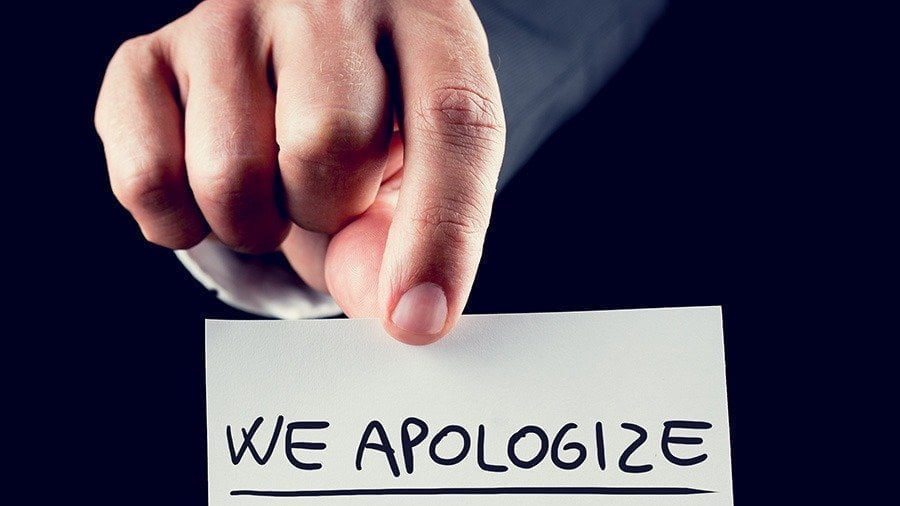By Anesu Makwasha
Looking back at the start of 2022, the phrase when life gives you lemons… applied holistically, only that the lemonade turned out to be a tad bit more bitter than anticipated. Here, I was having a shitty Wednesday evening but on a call with a very special and close daughter-of-someone. We found ourselves at a point in the call where she called me out on my somewhat terrible communication skills. A lot was said in the conversation, but this right here is what got stuck in my head:
“Anesu, do you want to change or do you want us to continue operating like this cause I’m tired. You always do this, you sound remorseful, but we continue like this all the time. What do you have to say to this?”After the call, I got to thinking about all the apologies I have made since 2013 (ie, when I started my first business). How did my clients feel and what message did they take home after the conversation? I then went on to look at the churn levels for Tose and truth be told, it wasn’t looking so good. Honestly, for a business that claims to be client-centric, we were losing more business than we were signing new clients. The realization I came to was that I hadn’t been in touch with my emotions and I had been apologizing in the wrong manner to my employees, my clients et. al.
A thought significantly kept running through my mind, that no apology is less genuine than one that’s been coerced from a three-year-old: eyes down, body turned away, fists clenched, and feet threatening to stomp. Eventually, they manage to force out a sound that could be interpreted as “sorry,” but there’s almost certainly no remorse behind it.
As adults, we learn how to offer a more mature version of this kind of apology that involves less foot-stomping. I am reminded that giving a genuine, effective apology is still hard work! It’s even particularly more difficult in customer service, where there’s often a need to apologize while holding firm to your decision or turning down requests you can’t fulfill.
So, to improve on the process of apologizing and customer retention for our business, we came up with five things we ought to always do when we are working to resolve conflicts. Think of it as us trying to test all the assumptions of the service recovery paradox versus customer churn levels in our business.
Empathy is key
This was the hardest part for us, as it was -rather it is- extremely hard to have the ability to understand and share the feelings of our clients. We didn’t believe that we had even tried to understand our clients during conflict or crisis. We always focused on getting a solution that is a win-win with our clients and missed connecting with our client’s feelings.
Last week we reached all the clients on our churn list, we asked and listened to how they were feeling, and not-so-shocking they were more responsive to this approach. We got to learn how we have been doing Customer Care wrong and got to offer better solutions to the client’s issues from their point of view. This made us feel like we were living by our main value: Customer Co-Creation.
Say sorry and mean it
I have always been proud of the fact that I for one can end a conflict by saying a big, “I am sorry, I won’t do it again.” However, lately, the old and tired saying has not been working and most people are seeing through the statement. I thought I was being sincere, but now I am starting to realize that it’s more of a conversational marker than it is a sincere apology.
As part of our learning and reminder, we printed an A1 printout screaming, “We are only sorry when are sorry!” Simply, we decided to be saying sorry when we mean it. The results have been more sincere and open conversations with our clients and other service providers.
Own up to your mistake and explain what went wrong
So, part of being a great business is being able to face the truth alone. Asking ourselves as follows:
- What did we do wrong?
- How did we reach the breakdown in communication?
- How can we grow together as one?
It is always hard for the best of us to admit that some of the mistakes we made were simply because we were not present to our surroundings. After coming to terms with that you have to now communicate your reasoning with a client and make sure they understand that you meant them no harm.
Offer a Solution
Every person in a tough or uncomfortable position is interested in getting a solution to the challenges they are facing. So who better to offer a solution than the person who put the respective parties into the tough position they are in.
After explaining why you are in the position you are in and understanding the position you are in, it’s easier to come up with a solution that will help the client solve the challenges they are facing. Give them a great experience that will leave them trusting your capabilities to help them through their journey.
Regularly Document and Review all Support Issues
Since, most of the business challenges are not unique in your market, recording the challenges and the solutions offered will help you give timely solutions in the future before the situation escalates.
These are the lessons we learned on how to communicate a challenge and apologies to a client. What would you say are the lessons and solutions you learned in your business?













